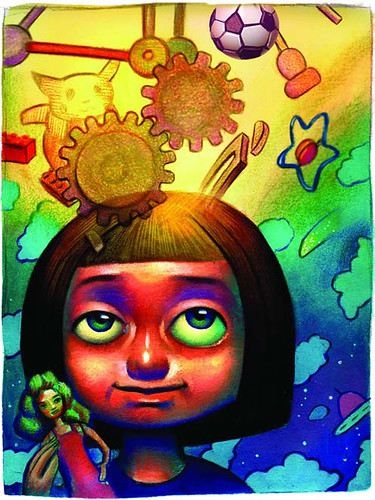
The toddler entertainment market has exploded in recent years: Infants, toddlers and preschoolers in the United States watch an average of one to three hours of video media and television programming per day. But new research suggests parents should choose videos with high interactive content if they want their children to be educated as well as entertained by their time in front of the tube.
The findings were published in the May 17 issue of Child Development by Vanderbilt University psychologists Georgene Troseth and Megan Saylor.
“By age 2, children have figured out that other people are a primary source of information about the world, and they use social cues such as facial expression and where a person looks or points to gather that information. As a result, they are more likely to learn from a person on video whom they perceive as a conversational partner,” says Troseth, an assistant professor of psychology in Peabody College. “In our study, if a video was not interactive, children were much more likely to dismiss the information being conveyed.”
Troseth, Saylor, and research assistant Allison Archer conducted two experiments to better understand which type of video best engaged toddlers. In the first, they tested differences in learning from video and from face-to-face interactions among 24 2-year-olds. A woman on a TV screen told the children where to find a stuffed animal hidden in another room. She then gave a second group of children the same information in person. The first group of toddlers rarely found the stuffed animal, suggesting they didn’t believe or listen to the woman on the screen. The children given the instructions in person usually found the toy.
In the second experiment, researchers used a closedcircuit video system to make the experience interactive. The woman on the screen could see, hear and respond to the children through conversation and games. After five minutes of interacting with the woman on the TV, children used the information she provided to find the hidden object.
Troseth and her colleagues believe the results indicate that because toddlers understand the difference between their “real” environment and what they see on videos, they are likely to dismiss information offered by someone on television unless that person is clearly interacting with them. This interaction can include tactics such as asking children questions, using their names, or referring to something they can see and touch in their real environment.
Troseth served as a consultant for Sesame Workshop on its new DVD series, which uses Muppet babies and caregivers to encourage and model good social interaction. She is a member of the Vanderbilt Learning Sciences Institute and an investigator in the Vanderbilt Kennedy Center for Research on Human Development